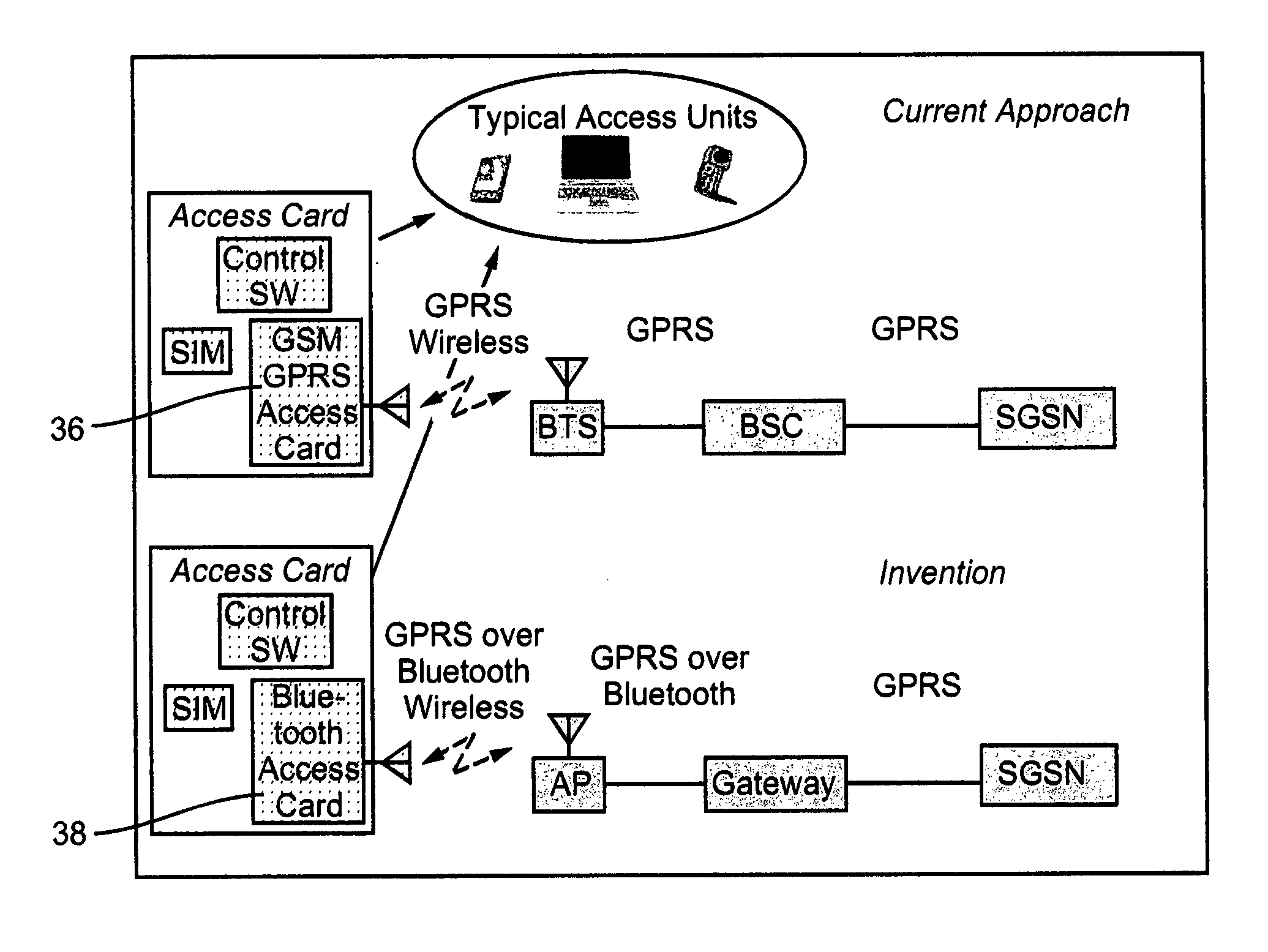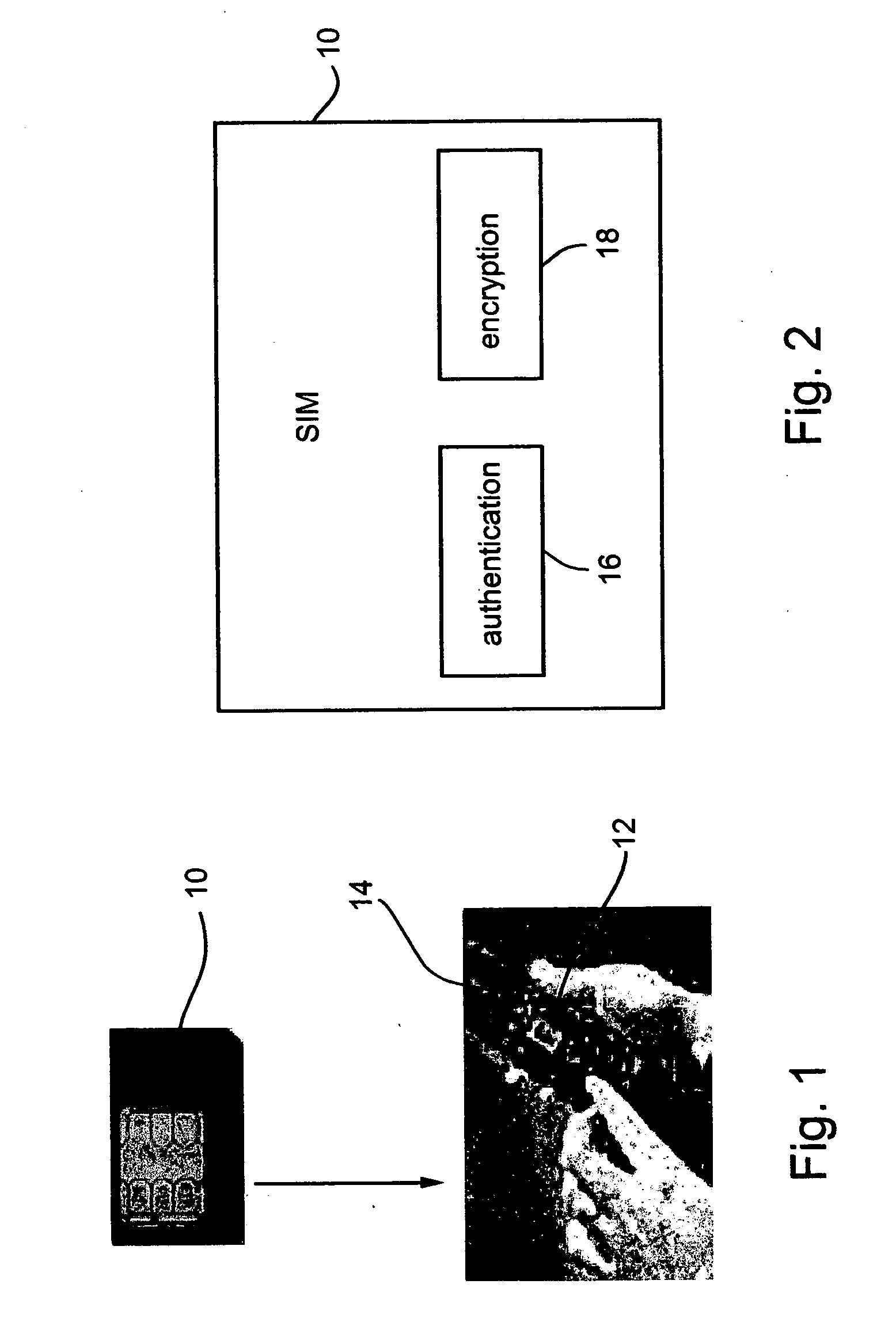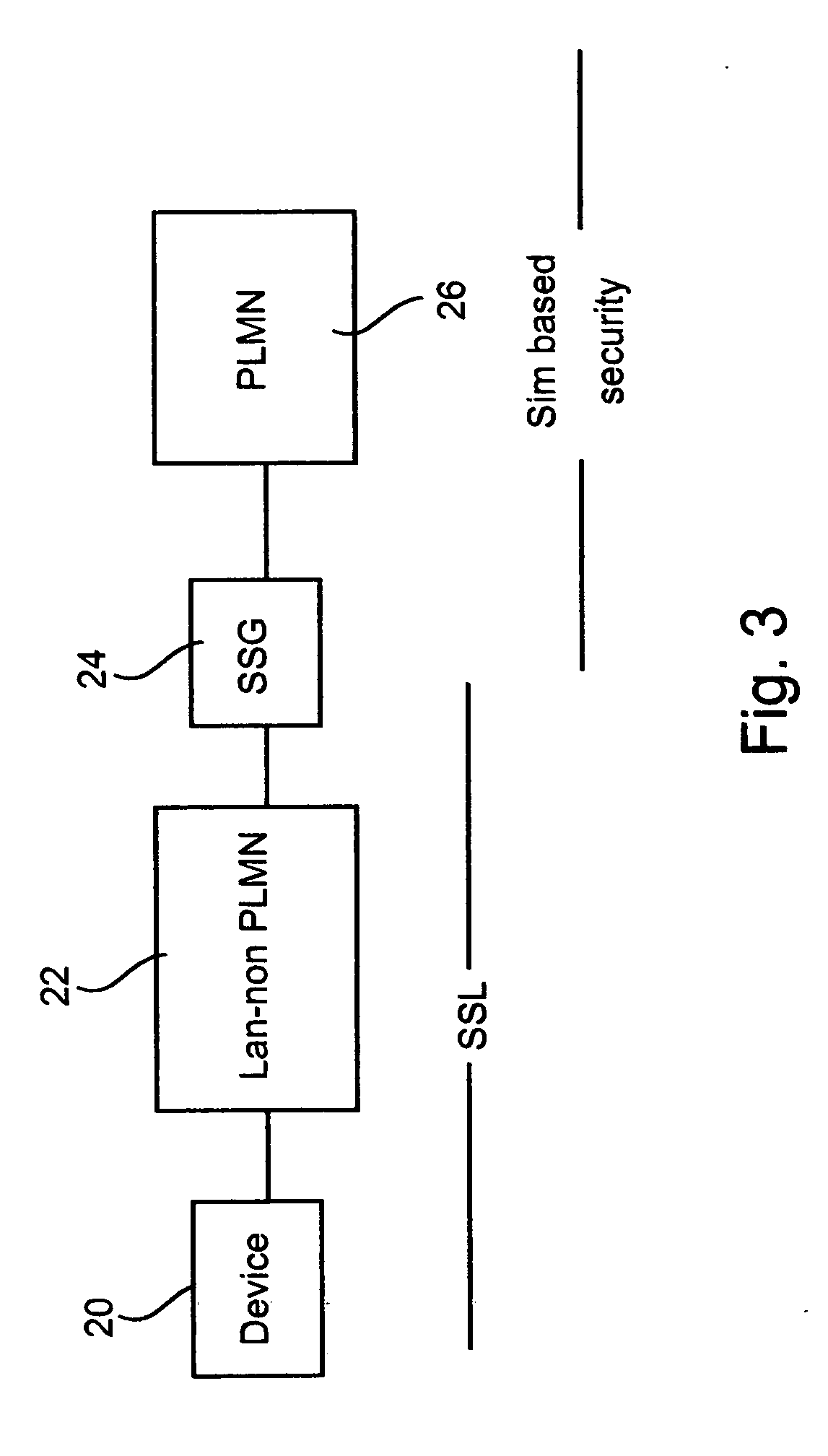Access to plmn networks for non-plmn devices, and to issues arising in interfaces in general between plmn and non-plmn networks
a technology of plmn network and non-plmn devices, applied in the direction of transmission, wireless commuication services, security arrangements, etc., can solve the problems of low connection quality, low connection quality, and low connection quality, so as to reduce connection quality
- Summary
- Abstract
- Description
- Claims
- Application Information
AI Technical Summary
Benefits of technology
Problems solved by technology
Method used
Image
Examples
examples
[0271] An example of the above would be a PDA using an 802.11 access card connecting to an 802.11 LAN, through which it is connected to the GSM or GPRS cellular network. According to the above embodiments, such a connection may be achieved without providing the PDA with a GSM compatible SIM.
[0272] Virtual SIM
[0273] Reference is now made to FIG. 4C, which is a simplified comparative diagram showing an alternative embodiment for allowing non-PLMN devices access to a PLMN network. The approach is suitable when connection to the PLMN is only required for authentication and accounting purposes, but no user traffic is exchanged between the access device and the PLMN. As explained above, in this approach, the end user access device is equipped with a virtual SIM. The simulated cellular node (either VBSC or VSGSN+) has an authentication database, where all the authentication information of subscribers with Virtual SIM (or other means simulating authentication tokens for cellular identitie...
PUM
 Login to View More
Login to View More Abstract
Description
Claims
Application Information
 Login to View More
Login to View More - R&D
- Intellectual Property
- Life Sciences
- Materials
- Tech Scout
- Unparalleled Data Quality
- Higher Quality Content
- 60% Fewer Hallucinations
Browse by: Latest US Patents, China's latest patents, Technical Efficacy Thesaurus, Application Domain, Technology Topic, Popular Technical Reports.
© 2025 PatSnap. All rights reserved.Legal|Privacy policy|Modern Slavery Act Transparency Statement|Sitemap|About US| Contact US: help@patsnap.com



